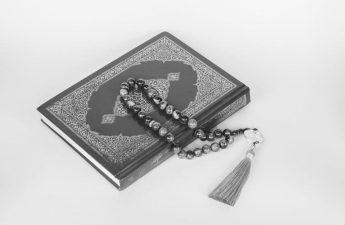A Long Way Gone⁚ A Comprehensive Overview
Ishmael Beah’s “A Long Way Gone” offers a harrowing firsthand account of his experiences as a child soldier in Sierra Leone’s civil war. The memoir details his escape from rebel attacks, his conscription into the army, and the profound psychological impact of his ordeal. Numerous online resources and PDF versions are available for readers.
Ishmael Beah’s Memoir⁚ A Critical Analysis
Ishmael Beah’s “A Long Way Gone⁚ Memoirs of a Boy Soldier” stands as a powerful testament to the devastating effects of war on children. Beah’s narrative transcends the typical war memoir, delving into the psychological and emotional turmoil experienced by a young boy thrust into unimaginable circumstances. The writing style, though deeply personal, maintains a remarkable objectivity. Beah doesn’t shy away from depicting the brutal realities of his experiences, including his participation in violence, but he also reveals his vulnerability and the enduring human spirit amidst the chaos. The memoir’s strength lies in its unflinching honesty, forcing readers to confront the ethical complexities of war and the lasting scars it leaves on its victims. The accessibility of the narrative, despite the gravity of the subject matter, makes it a compelling read for a broad audience. Critics have praised Beah’s ability to convey the emotional landscape of trauma without sensationalism, rendering a truly impactful and unforgettable story. The book’s success stems from its ability to humanize the often-dehumanized experience of child soldiers, making their plight both relatable and profoundly moving.
The Narrative’s Impact and Literary Significance
“A Long Way Gone” transcends the genre of war memoir, achieving significant literary impact through its unflinching portrayal of trauma and resilience. Beah’s first-person narrative creates an intimate connection with the reader, fostering empathy for his experiences as a child soldier. The raw honesty of his storytelling, coupled with the vivid imagery and emotional depth, leaves an indelible mark on the reader’s psyche. The book’s success extends beyond its literary merit; it has sparked crucial conversations about the devastating consequences of armed conflict on children. The narrative powerfully humanizes the often-dehumanized experience of child soldiers, prompting readers to confront the ethical complexities of war and its lasting impact on individuals and communities. Beah’s evocative prose transcends mere recounting of events; it explores themes of loss, survival, and the enduring power of the human spirit in the face of unimaginable suffering. The accessibility of the language, despite the gravity of the subject matter, broadens the book’s reach, ensuring its message resonates with a diverse readership. Its impact is undeniable, shaping perceptions of war and its impact on the most vulnerable populations.
Historical Context⁚ The Sierra Leone Civil War
Understanding the historical context of Sierra Leone’s civil war (1991-2002) is crucial to appreciating the depth and impact of Ishmael Beah’s memoir. The conflict, fueled by a complex interplay of political instability, economic inequality, and ethnic tensions, plunged the nation into a brutal decade of violence. The Revolutionary United Front (RUF), a rebel group, initiated the conflict, employing brutal tactics, including the widespread recruitment and use of child soldiers. These children, often abducted from their homes and villages, were subjected to intense indoctrination, forced to participate in horrific acts of violence, and denied any semblance of normal childhood. The war ravaged the country’s infrastructure, leaving a legacy of widespread destruction, displacement, and lasting trauma for its citizens. The government’s response was often ineffective, exacerbating the suffering and creating a climate of fear and uncertainty. This backdrop forms the brutal reality within which Beah’s experiences as a child soldier unfolded, highlighting the devastating human cost of this conflict and the long-term consequences for those who survived it. The war’s legacy continues to shape Sierra Leone, underscoring the importance of understanding this historical context to fully comprehend the narrative presented in “A Long Way Gone.”
Beah’s Experiences as a Child Soldier
Ishmael Beah’s memoir vividly recounts his harrowing experiences as a child soldier, offering a deeply personal and unflinching portrayal of the brutal realities faced by young recruits. At the age of twelve, he fled his village amidst the escalating violence of Sierra Leone’s civil war, embarking on a perilous journey through a landscape ravaged by conflict. Separated from his family, he wandered for months, witnessing unspeakable atrocities and struggling to survive. His eventual encounter with the government army led to his conscription, thrusting him into a world of violence and brutality far beyond his comprehension. Beah’s narrative vividly describes the rigorous training regimen, the dehumanizing effects of indoctrination, and the horrific acts he was forced to commit, highlighting the psychological toll such experiences inflict. He recounts moments of both intense fear and surprising camaraderie amongst fellow child soldiers, offering a nuanced portrayal of their shared trauma and resilience. The memoir underscores the profound impact of this experience, permanently shaping his identity and worldview, and highlighting the lasting consequences of childhood exposure to armed conflict. His transformation from a gentle boy to a hardened soldier serves as a powerful testament to the devastating effects of war on vulnerable youth.
The Psychological Trauma Depicted in the Memoir
“A Long Way Gone” powerfully depicts the profound and lasting psychological trauma inflicted upon Ishmael Beah and other child soldiers. The memoir doesn’t shy away from exploring the brutal realities of their experiences, showcasing the devastating effects of violence, loss, and the dehumanizing aspects of war. Beah’s narrative vividly portrays the emotional toll of witnessing horrific acts, participating in violence, and enduring constant fear. The detachment from his former self, the struggle to reconcile his past actions, and the overwhelming sense of guilt and shame are palpable throughout the memoir. His descriptions of nightmares, flashbacks, and emotional numbness illustrate the long-term consequences of his trauma. The memoir also subtly explores the complex interplay between trauma and resilience, showing how Beah and his fellow soldiers found ways to cope with their experiences, forming bonds of camaraderie and developing survival mechanisms. However, the lasting impact of their trauma remains evident, highlighting the need for understanding and support for those who have endured similar ordeals. The exploration of these psychological scars adds a layer of depth and urgency to Beah’s already impactful narrative, making it a compelling testament to the enduring consequences of war.
The Book’s Reception and Awards
Ishmael Beah’s “A Long Way Gone” received widespread critical acclaim upon its release, solidifying its place as a significant work of contemporary literature and a powerful testament to the human spirit’s resilience in the face of unimaginable adversity. The memoir’s unflinching portrayal of the Sierra Leone civil war and its impact on child soldiers resonated deeply with readers and critics alike. Its honest and emotionally raw account garnered numerous accolades, establishing Beah’s voice as a prominent one in the literary world. The book’s success is not merely due to its compelling narrative, but also its contribution to raising awareness about the devastating effects of armed conflict on vulnerable populations, particularly children. The accolades it received underscore its literary merit and its powerful social impact. While specific award names aren’t explicitly mentioned in the provided text, the numerous positive reviews and its inclusion in “Time” magazine’s top 10 nonfiction books of 2007, attests to its significance and impact. The book’s continued relevance and enduring popularity speak volumes about its ability to connect with readers on an emotional and intellectual level, prompting reflection on the complexities of war and its devastating human cost. Its reception solidified its status as a modern classic.
Accessibility of the PDF Version
The accessibility of “A Long Way Gone” in PDF format varies. While numerous websites mention the availability of PDF downloads, the legality and reliability of these sources are uncertain. Some links provided lead to potentially unreliable or unauthorized sources, highlighting the need for caution when searching for digital copies. Readers should be mindful of copyright laws and only access PDFs from reputable publishers or authorized online bookstores. The size of the PDF file is mentioned (25 MB), suggesting that it’s a substantial document, potentially including the full text of the memoir. The inconsistent availability and the lack of a single, universally accessible, legitimate PDF version underscores the challenges in navigating online resources. Users should exercise caution and prioritize official channels to ensure they are accessing a legal and complete version of the book. This inconsistency in accessibility highlights the need for publishers to improve the availability of authorized digital versions to prevent users from relying on potentially unreliable sources. The search for a reliable PDF version often leads to a maze of links, some promising free downloads, others leading to questionable websites. Therefore, responsible sourcing is paramount when searching for a digital copy of “A Long Way Gone.”
Online Resources and Download Options
Locating “A Long Way Gone” as a PDF online presents a mixed bag of results. Several websites offer download links, but their legitimacy and safety are questionable. Some links lead to file-sharing platforms or websites with questionable reputations, potentially exposing users to malware or other online threats. Therefore, caution is advised. While some sources claim to offer free PDF downloads, the legality of such distribution is uncertain, potentially violating copyright laws. Reputable online bookstores and e-book platforms, such as Amazon’s Kindle Store, offer legal and safe digital versions of the book, albeit at a cost. These official channels ensure the reader receives a complete and authorized copy of the memoir, free from potential risks associated with unauthorized downloads. Users should always prioritize these established platforms to support the author and acquire a legal copy. The abundance of unofficial links highlights the complexities of navigating the digital landscape and underscores the need for responsible online behavior. Readers should be discerning and prioritize secure and legitimate sources to download the book, ensuring a safe and legal reading experience.
Further Reading and Related Works
To further explore the themes and historical context of “A Long Way Gone,” readers might delve into other accounts of the Sierra Leone Civil War. Books offering diverse perspectives on the conflict, including those focusing on the experiences of other child soldiers, aid workers, or political figures involved, can provide a richer understanding. Academic works analyzing the root causes of the war, the role of child soldiers, and its lasting consequences offer valuable insights. Exploring the broader literature on post-traumatic stress disorder (PTSD) and the psychological effects of war on children can enhance comprehension of Beah’s experiences. Memoirs and novels that deal with similar themes of displacement, trauma, and resilience offer compelling parallels. In addition to books, documentaries and films about the Sierra Leone Civil War provide alternative perspectives and visual representations of the events described in Beah’s memoir. Investigating these supplementary materials enriches the reader’s understanding of the complexities of war and its impact on individuals and societies. These resources allow for a more comprehensive and nuanced perspective, expanding beyond Beah’s personal narrative to encompass a broader understanding of the historical and psychological aspects of the conflict.


